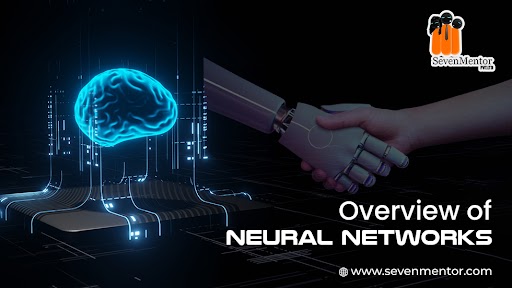Overview of Neural Networks
In the realm of artificial intelligence, neural networks stand out as powerful models inspired by the human brain’s structure and functioning. These networks consist of interconnected layers of artificial neurons that work together to process input data and generate output predictions. In this article, we’ll delve into the Overview of neural networks, the significance of activation functions, and the crucial role played by bias in their functioning.
For Free, Demo classes Call: 020-71177359
Registration Link: Click Here!
Structure of a Neural Network
At its core, a neural network comprises three main types of layers:
- Input Layer: The input layer serves as the entry point for data into the neural network. Each neuron in this layer represents a feature or attribute of the input data.
- Hidden Layers: Hidden layers are the intermediate layers between the input and output layers. These layers perform complex transformations on the input data through weighted connections and activation functions. Deep neural networks consist of multiple hidden layers, allowing them to learn hierarchical representations of data.
- Output Layer: The output layer produces the final predictions or outputs of the neural network. The number of neurons in this layer depends on the nature of the task—binary classification, multi-class classification, regression, etc.
Activation Functions: Catalysts of Non-Linearity
Activation functions are critical components embedded within each neuron of a neural network. They introduce non-linearities to the network, enabling it to approximate complex functions and learn from non-linear relationships in data. Without activation functions, neural networks would reduce to linear models, severely limiting their expressive power.
Let’s explore some commonly used activation functions:
- Sigmoid Function: σ(x) = 1 / (1 + e^(-x))
- Output Range: (0, 1)
- Suitable for: Binary classification
- Challenges: Vanishing gradient problem
- Hyperbolic Tangent Function (Tanh): tanh(x) = (e^(x) – e^(-x)) / (e^(x) + e^(-x))
- Output Range: (-1, 1)
- Suitable for: Hidden layers in deep neural networks
- Challenges: Vanishing gradient problem
- Rectified Linear Unit (ReLU): f(x) = max(0, x)
- Output Range: [0, ∞)
- Suitable for: Most scenarios due to simplicity and effectiveness
- Challenges: Dying ReLU problem for negative inputs
- Leaky ReLU: f(x) = max(ax, x) where a is a small constant
- Output Range: [0, ∞)
- Suitable for: Addressing the dying ReLU problem
- Challenges: Need to tune the leakage parameter ‘a’
- Exponential Linear Unit (ELU): f(x) = x if x > 0, and a(e^(x) – 1) if x <= 0
- Output Range: (-a, ∞)
- Suitable for: Addressing the limitations of ReLU, especially for negative inputs
For Free, Demo classes Call: 020-71177359
Registration Link: Artificial Intelligence Course in Pune!
The Role of Bias
In addition to weighted connections, each neuron in a neural network incorporates a bias term. The bias allows the neuron to adjust its output independently of the input, providing flexibility and enhancing the model’s capacity to fit complex patterns in data. Conceptually, the bias term enables the neural network to learn even when all input features are zero or absent.
Including bias terms in neural networks introduces additional parameters that contribute to model flexibility. Proper initialization and tuning of these bias terms are crucial for ensuring optimal network performance and preventing issues such as underfitting or overfitting.
Conclusion
Neural networks are versatile and powerful models capable of learning complex patterns and making accurate predictions across various domains. Understanding the structure of neural networks, the role of activation functions, and the importance of bias is essential for designing effective deep learning architectures.
Do Watch our video on AI Threats: Click Here
By leveraging appropriate activation functions, along with carefully initialized bias terms, practitioners can build robust neural networks capable of tackling real-world challenges and unlocking the full potential of artificial intelligence.
Author:
Karishma Pawar
Call the Trainer and Book your free demo Class For Artificial Intelligence Call now!!!
| SevenMentor Pvt Ltd.
© Copyright 2021 | SevenMentor Pvt Ltd.

